#spacewalks
Text

Top 30 spacewalk records by cumulative EVA time
by u/009co
27 notes
·
View notes
Text



23 notes
·
View notes
Text
Walking Above the Air: The Captivating Evolution of Spacewalks

Spacewalks, or extravehicular activities (EVAs), represent some of the most breathtaking moments in human space exploration. While they are visually stunning and technically remarkable, not every spacewalk unfolds without challenges—from astronauts getting stuck in hatches to losing tools or facing near-drowning incidents.
The upcoming Polaris Dawn mission by SpaceX marks a potential milestone in commercial spaceflight: the first spacewalk by a private citizen. Billionaire Jared Isaacman, a major funder of the mission, aims to become the first non-professional astronaut to conduct a private spacewalk outside SpaceX's Dragon capsule. The mission is set to reach an altitude of approximately 870 miles (1,400 km), making it the highest crewed spaceflight since the Apollo missions over 50 years ago. Isaacman’s spacewalk, scheduled at a lower orbit of around 434 miles (700 km), will be accompanied by SpaceX engineer Sarah Gillis. Both will wear SpaceX's new spacesuits, featuring helmet displays and mounted cameras.
However, the Crew Dragon capsule lacks an airlock, necessitating full depressurization of the capsule before exiting. This, combined with the use of new spacesuits, introduces additional risks for the crew.
Spacewalks have come a long way since the first historic event nearly 60 years ago. Here’s a look back at some of the most notable moments in the history of spacewalks:
The First Spacewalk
On March 18, 1965, Soviet cosmonaut Alexei Leonov became the first human to walk in space, stepping outside the Voskhod 2 spacecraft through an inflatable airlock. Although Leonov spent 12 minutes in space tethered to the spacecraft, his mission faced challenges. His spacesuit became rigid in the vacuum of space, hindering movement and photography. He also struggled to re-enter the spacecraft and had to reduce the suit’s pressure to fit through the hatch, resulting in his spacesuit being soaked with sweat.
The First American Spacewalk
Just over two months later, on June 3, 1965, Ed White became the first American to step outside a spacecraft during the Gemini 4 mission. Using a hand-held oxygen-jet gun, White maneuvered outside the capsule for 23 minutes. The gun’s fuel depletion forced him to move by tugging on a tether. Tragically, White would die in the Apollo 1 fire less than two years later.
The First Space 'Selfie'
During the Gemini XII mission in November 1966, Edwin "Buzz" Aldrin not only contributed to the mission’s success but also took what is considered the first space "selfie." Aldrin’s photo, captured with a camera mounted on the edge of the spacecraft hatch, shows Earth in the background and has become an iconic image in space exploration history.
Untethered Spacewalk
In 1984, Bruce McCandless II performed the first untethered spacewalk using a nitrogen-propelled Manned Manoeuvring Unit (MMU). During the STS-41-B Space Shuttle Mission, McCandless floated 91 meters (300 feet) from the Shuttle Challenger, showcasing the MMU’s capabilities and setting a new precedent for space mobility.
Space Salvage with a Twist
Later in 1984, astronauts Dale Gardner and Joseph Allen conducted the first space salvage mission, retrieving faulty satellites from orbit. Using the MMU, Allen maneuvered to the Palapa B-2 satellite, which had failed to reach its intended orbit, and inserted a capture device to stabilize it. The mission, dubbed a "scrap-yard salvage," successfully returned the satellites to the Space Shuttle’s cargo bay.
These historic spacewalks illustrate the human spirit’s resilience and innovation in exploring the vastness of space. With each new mission, astronauts continue to push the boundaries of what’s possible, paving the way for future achievements in space exploration.
0 notes
Text
Exploring the Cosmos: The Evolution and Impact of Spacewalks
Spacewalks, formally known as extravehicular activities (EVAs), represent some of the most awe-inspiring achievements in human history. The courage and ingenuity required to leave the safety of a spacecraft and navigate the unforgiving void of space underscore humanity’s relentless pursuit of exploration and discovery. Let’s delve into the captivating history, significance, and recent…
0 notes
Text
NASA's Exciting Upcoming Spacewalks: Station Repairs and Upgrades!
Astronaut waves during a spacewalk outside of the International Space Station (Credits: NASA)
NASA never ceases to amaze us with its incredible accomplishments in space exploration. And this time, they’re making headlines again with a series of upcoming spacewalks aboard the International Space Station (ISS). These spacewalks, scheduled for June, aim to conduct vital repairs and upgrades to…

View On WordPress
0 notes
Link
Say hello to Anna, our newest host and the latest addition to the Astronomy Daily Team.
**Featured Topics:**
**SpaceX Crew-7's Triumphant Return:** Reflecting on the achievements of the international crew and their record-setting mission aboard the Endurance spacecraft.
**The Black Hole's Feast:** Diving into the tidal disruption event in galaxy NGC 3799, shedding light on the nature of supermassive black holes.
**AtLAST's Vision:** Exploring the potential of the proposed Atacama Large Aperture Submillimeter Telescope to unlock the universe's radio wave secrets.
**Nuclear Power on the Moon:** Discussing Roscosmos and CNSA's plans for a nuclear reactor on the moon to power the International Lunar Research Station.
**SLS Block 1B's Evolution:** Anticipating the enhanced capabilities of NASA's SLS Block 1B and its role in the Artemis program's expansion.
For a daily dose of the cosmos, visit astronomydaily.io and subscribe to our newsletter for the latest updates. Connect with us and share your thoughts; we're eager to hear from our community of star gazers. Remember, the mysteries of the universe await, and we're here to guide you through them.
#3799#black#commercial#crew#disruption#event#experiments#hole#international#microgravity#nasa#ngc#program#seven#space#spacewalks#spacex#station#supermassive#tidal
0 notes
Link
Marina Vasilevskaya is part of the main crew, and Anastasia Lenkova is part of the backup crew The Cosmonaut Training Center named after Yu.A. Gagarin continues to train Marina Vasilevskaya and Anastasia Lenkova from Belarus. The press service of Roscosmos spoke about the past important stage [caption id="attachment_70116" align="aligncenter" width="780"] cosmonauts[/caption] Under the guidance of TsPK instructors, the girls completed two training cycles in zero-gravity mode on an Il-76MDK laboratory aircraft. The first flight was an introductory flight - the body needs time to adapt to weightlessness, which lasts just over 20 seconds, and g-forces of two units. [caption id="attachment_70117" align="aligncenter" width="408"] cosmonauts[/caption] To achieve the desired effect, at an altitude of 6 to 9 km, pilots perform a “slide” figure. Those in the cabin lift off the floor and in this state perform various exercises: moving along the plane and from side to side, transferring cargo, and practicing body orientation skills in space. There are up to ten such “slides” per 1.5-hour flight. cosmonauts from Belarus completed training in zero-gravity [caption id="attachment_70118" align="aligncenter" width="780"] cosmonauts[/caption] At the next training session, the tasks became more complicated: additional work was done on putting on spacesuits (there are three modes of short-term weightlessness for this, that is, about a minute), moving in them, and moving cargo. [caption id="attachment_70119" align="aligncenter" width="769"] cosmonauts[/caption] The CPC instructors noted that the space flight participants were able to learn a lot and do a large amount of work during two training sessions on the laboratory aircraft. They also noticed that the Belarusian space flight participants quickly adapted to the cyclical conditions of short-term weightlessness and overloads; they had well-developed coordination of movements and orientation in space. Marina Vasilevskaya is part of the main crew of the 21st visiting expedition to the ISS along with Oleg Novitsky and Tracy Dyson, Anastasia Lenkova is part of the backup crew, along with Ivan Vagner and Donald Pettit. Oleg Novitsky and Marina Vasilevskaya will spend 12 days on the ISS and return to Earth on the Soyuz MS-24 together with NASA astronauts Loral O'Hara, and Tracy Dyson will continue the flight. Departure is scheduled for March 2024.
#astronauts#cosmonauts#human_spaceflight#International_Space_Station_ISS#Russian_space_program#space_adventures#space_agencies#space_explorers#Space_History#space_missions#space_pioneers#space_professionals#space_science#space_training#space_travelers#spacewalks
0 notes
Text









i guess i never talked properly about what Kimi to Uchuu wo Aruku Tame ni (I Want To Walk In Space With You) is actually about because i kind of was hoping other people could have the experience i had reading it ("okay this manga is really new i'll check it out -> ow ow oof ow"), but i guess if i want people to get interested i need to give them something lol. still, i think the comic speaks for itself better than i ever could, so here are some pages from the first chapter that really resonated with me
#some people need to be creative to coexist with others#kimi to uchuu wo aruku tame ni#i want to walk in space with you#spacewalking with you
2K notes
·
View notes
Text

Robert McCall space art on the cover of The Wonders of Space: Rockets, Missiles, and Spacecraft, 1967.
445 notes
·
View notes
Text

Going for a walk. Apollo 17 astronaut Ronald Evans leaves to the spacecraft to retrieve film cassettes from the Service Module, Dec 1972. Mr. Evans was Command Module Pilot & orbited the moon a record 75 times during the mission. He holds the record for most time spent in lunar orbit at just shy of 148 hours. He is the last human to orbit the moon solo. A historic figure in space pioneering.
#spacewalk#apollo 17#spacecraft#1972#outer space#apollo program#1970s#astronaut#space travel#nasa#astronauts#space#space exploration#vintage space#moon landing#space race#space age#astronaut suit#nasa astronauts#nasa picture of the day#nasa photos#spacesuit#project apollo
188 notes
·
View notes
Text
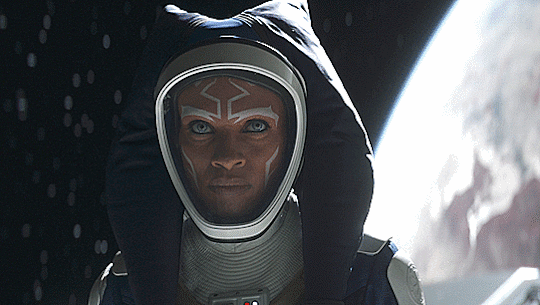


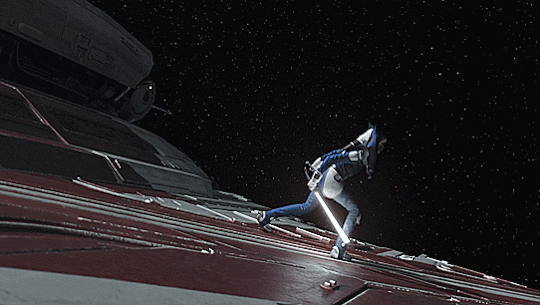
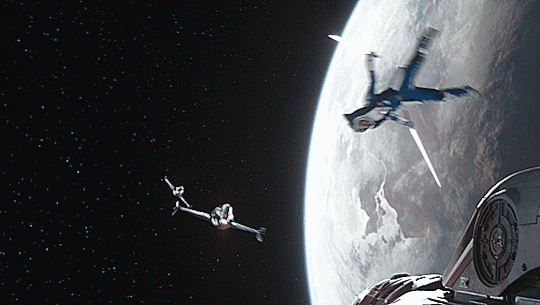
Ahsoka "Time to Fly"
#it's nice that Shin gave time to Ahsoka to suit up for her lil spacewalk#Star Wars#Ahsoka#Star Wars Ahsoka#Ahsoka TV#spoilers#Ahsoka spoilers#Time to Fly#Ahsoka Tano#Shin Hati#Marrok#starwarsedit#ahsokaedit#GIF#my gifs#Danny watches Ahsoka
339 notes
·
View notes
Text

Spacewalker, Dmitriy Kiselev, 2017
92 notes
·
View notes
Text

STS-105 Mission Specialist Daniel Barry traverses along Discovery's payload bay during EVA 1. August 16, 2001
During this 6 hour, 16 minute EVA, Barry, working with Mission Specialist Patrick Forrester, installed an Early Ammonia Servicer (EAS) to P6 Truss segment of the International Space Station. The EAS would supply ammonia to the station's cooling system if needed. They also installed two materials experiments to the outside of the Quest airlock. STS-105 Commander Scott Horowitz and Pilot Rick Sturckow supported the EVA from Discovery's flight deck.

Mission Specialist Patrick Forrester waves to the camera while inside Discovery's payload bay.
NASA 1, 2
Info
#Space Shuttle Program#Space Shuttle Discovery#International Space Station#NASA#spaceflight#space#space shuttle#spacewalk
31 notes
·
View notes
Text


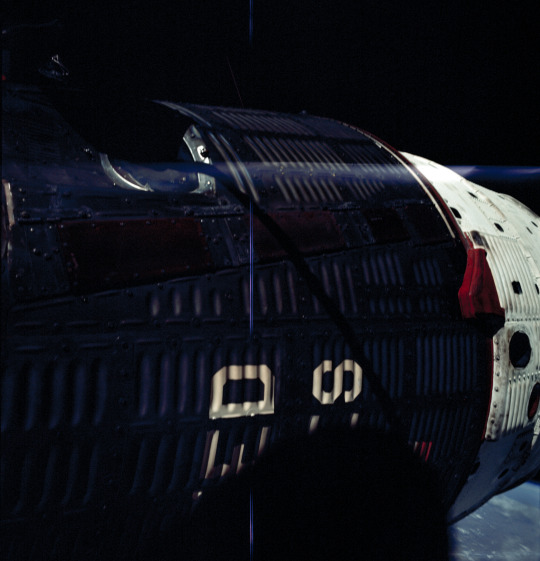
Astronaut Eugene A. Cernan's view from and of the Gemini-9A spacecraft during his extravehicular activity (EVA). Taken during the 32nd revolution of the 72-hour, 21-minute spaceflight.
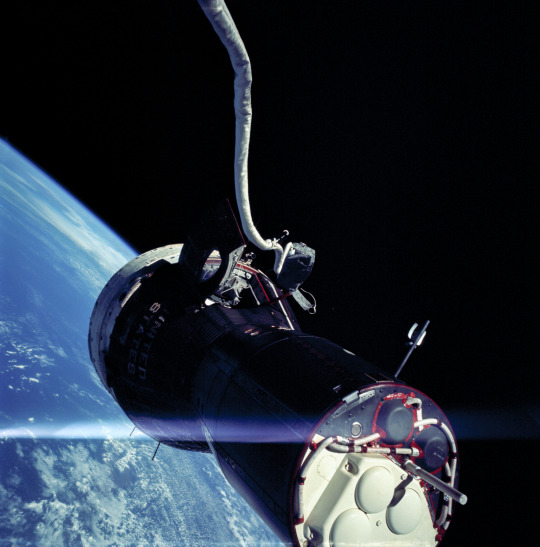
"'What a beautiful spacecraft,' said Gemini IX pilot Eugene Cernan during his two hour, eight minute spacewalk. He took this wide-angle photograph looking back at the window where command pilot Tom Stafford was watching."
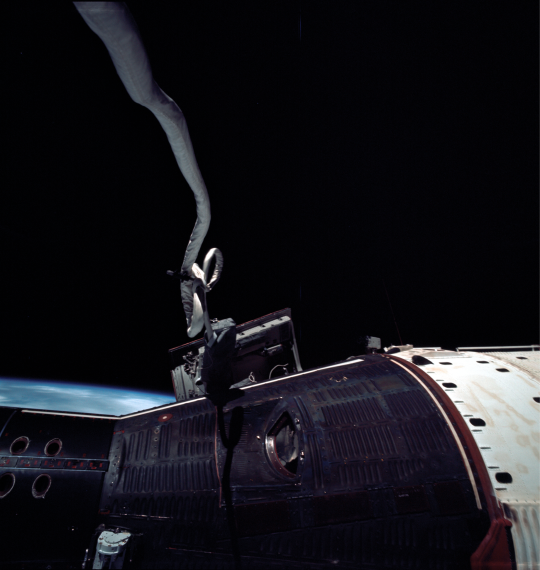

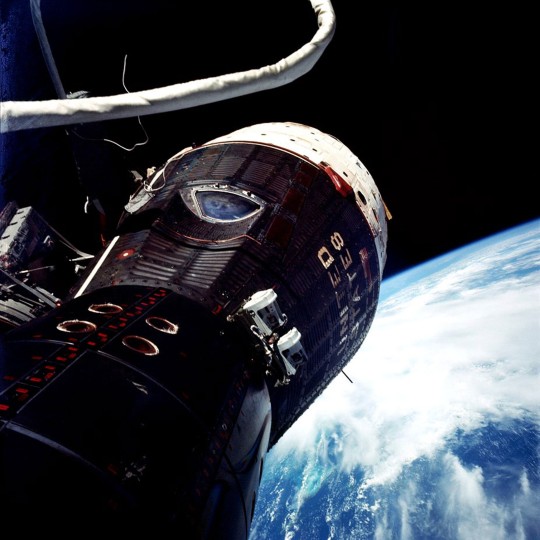
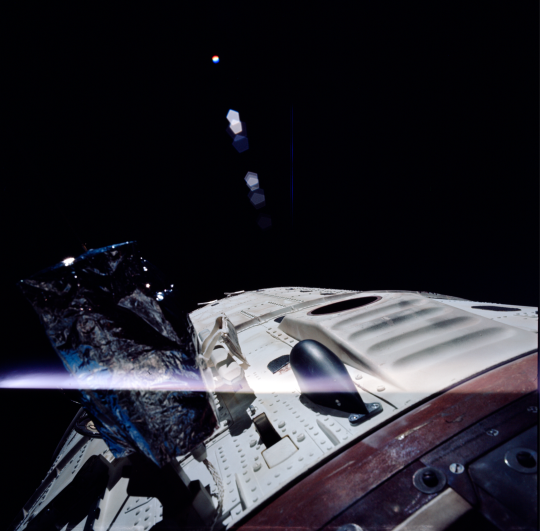
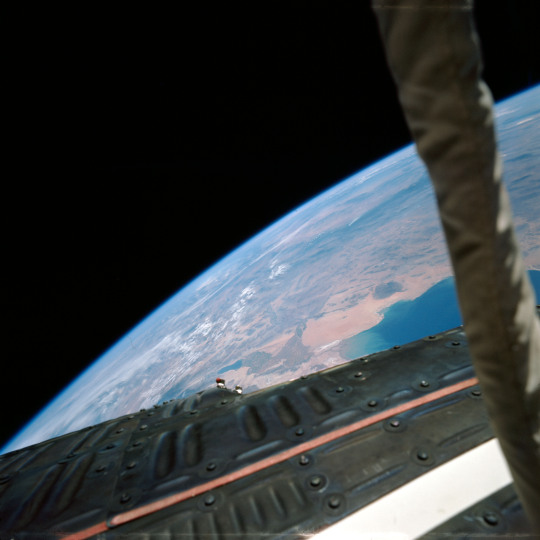

"Northwestern Mexico as seen from the Gemini-9A spacecraft during its 32nd revolution of Earth. The large penisula is Baja California. The body of water at lower right is the Pacific Ocean. The land mass at upper left is the State of Sonora. The Gulf of California separates Sonora from the peninsula."
Date: June 5, 1966
NASA ID: S66-38032, S66-38044, S66-38046, S66-38047, S66-38048, link, S66-37989, S66-38048, S66-38049, S66-38050, S66-38051, S66-38055, S66-38068, S66-38070
#GT-9#GT-IX#Gemini 9#Gemini IX#GT-9A#GT-IX-A#Gemini 9A#Gemini IX-A#SC9#NASA#Gemini Program#Project Gemini#spacewalk#June#1966#Eugene Cernan#Thomas Stafford#space#Earth#my post
248 notes
·
View notes
Text
If I were to make a Metroid or Metroid-adjacent game, one thing I would definitely do is bring back the feature from Super Metroid where you're able to toggle on and off certain upgrades. Tired of frozen enemies getting underfoot? Turn off ice beam. Tired of jumps making a silly noise? Turn off screw attack. And so on.
But I would frame it as Samus going into her suit computer in-universe to mess with things, so the player can turn on and off MUCH more than the upgrades. You can mess around with anything Samus would be able to, which opens up a number of esoeteric gameplay options that can be advantageous in certain situations, as well as a truly limitless number of ways to just screw yourself over on purpose. For instance, you can choose to remove the suit at any point. This kills you if you're in a superheated or vacuum area, and makes things impossibly challenging if you're not, as you can't jump well, take fall damage, and get decimated by local wildlife (but does allow you to fit through gaps without the morph ball). You can also choose to turn off the suit's life support, which causes the screen to blur and blacken and shrink over the course of a minute and a half, at which point you suffocate and die. This has no gameplay utility, and can be halted at any point by turning the life support back on, which causes her to audibly gasp. You can also turn off the in-game HUD, if you want a cleaner screen. You can engage the safety on your arm cannon, preventing it from being used. You can turn off the suit's musculoskeletal system, which causes Samus to collapse under the weight and can do nothing but shoot and slowly crawl. This gives you stealth advantage against any enemy that uses electroperception, such as platypuses. You can also have the suit dispense ration paste, which does nothing but cause Samus to emit a brief slurping noise. You can turn off the suit's radio identifier, which does nothing but prevent you from entering your ship (it has no idea who you are.) You can engage an armor lock that freezes you in place; if an enemy touches you, you tip over. You can turn off the suit's computer which blanks the menu and softlocks the game.
And finally you can activate self-destruct, KILLING YOU INSTANTLY, along with anything else in the room with you. Notably, this works on the final boss as well, which will trigger a cutscene for a "good" ending. However, instead of rolling credits afterwards, it will just send you back to the last save point, like the jackass you are.
#metroid#samus aran#I am the idea man. My ideas are delicious.#Directly inspired by Outer Wilds where you can spacewalk naked and get a bad ending for destroying the fabric of spacetime on purpose
113 notes
·
View notes